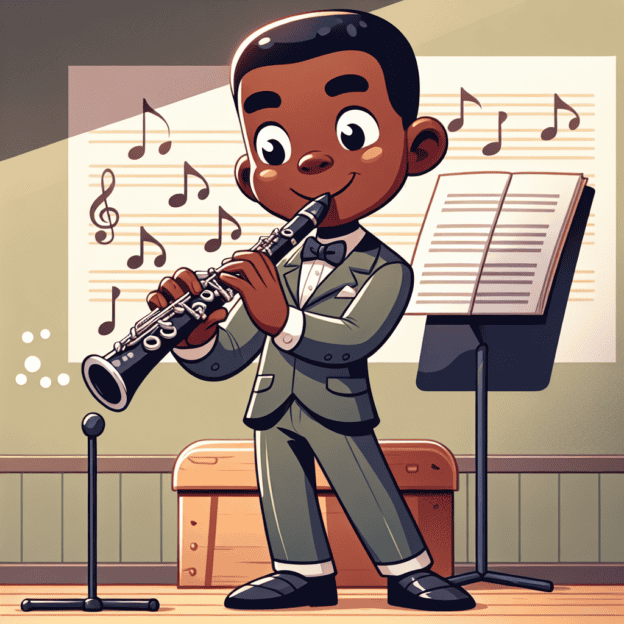Playing high notes on the clarinet can be exciting and challenging. Whether you're performing solo or in an ensemble, mastering the upper register is important for any clarinetist. With practice and good technique, you can achieve clear and precise high notes. This guide will help you improve your high note playing on the clarinet.
Understanding the Mechanics of High Notes
The clarinet's range goes well into the high register, but playing these notes requires a combination of techniques. High notes, or the altissimo register, typically start around the written B (sometimes called B?) above the staff and can go beyond. To master this register, you need to understand the clarinet's anatomy, airflow, and embouchure.
Embouchure: The Key to Clarity
Your embouchure, or how you position your mouth on the mouthpiece, greatly affects your ability to produce clear high notes:
- Firm but Relaxed: Keep a firm embouchure without too much tension. Your lower lip should cushion the reed while your upper lip rests gently on the mouthpiece. Finding the right balance lets the reed vibrate freely.
- Adjustment for High Notes: For high notes, tighten your embouchure slightly. This can help stabilize the reed's vibration for a clearer sound.
- Experiment: Try different embouchure positions when practicing high notes. Small changes can significantly affect your tone quality.
Breath Support for High Notes
Good breath control is key for playing high notes easily:
- Diaphragmatic Breathing: Use your diaphragm to support a steady air stream. Focus on deep, controlled breaths that provide power without forcing air through the clarinet.
- Sustaining Airflow: For high notes, keep your airflow consistent. Practice long tones to develop this skill, which helps with both consistency and focused sound.
- Control Dynamics: Practice playing softly in the upper register too. Getting comfortable with different volumes will help you control high notes better.
| Technique | Description | Benefit |
|---|---|---|
| Embouchure Adjustment | Slightly tighten for high notes | Clearer sound production |
| Diaphragmatic Breathing | Use diaphragm for steady air stream | Improved breath support |
| Dynamic Control | Practice soft and loud playing | Better control of high notes |
Finger Positioning Matters
Your finger placement also affects your ability to play high notes. Correct fingerings for upper notes can reduce tension and help with smoother transitions across registers:
- Use Appropriate Fingerings: Learn the specific fingerings for high notes. Some may be different from those used in the lower register.
- Practice Specific Exercises: Use exercises or etudes that focus on high-note passages to practice finger combinations. This helps develop muscle memory and coordination.
Warm-Up Exercises
Before playing high notes, warm up properly. Here are some effective warm-up exercises for developing range and flexibility:
- Long Tones: Start with long tones in the middle range, slowly moving up to higher pitches. Focus on keeping a steady sound without strain.
- Harmonic Work: Play harmonics by fingering lower notes and gently moving to the articulations that let you reach higher notes. This exercise is great for improving breath support.
- Dynamic Exercises: Practice scales or arpeggios in the higher register, slowly increasing the volume. This will help strengthen your tone control as you play higher notes.
Common Challenges and Solutions
As you practice high notes, you might face some challenges:
- Unclear Sound: If your sound isn't clear, check your embouchure. Make sure the reed is sealing properly against the mouthpiece.
- Sharpness: Many players find high notes tend to be sharp. If this happens, try adjusting your angle for better pitch or use a slightly softer reed.
- Tension: If you feel tense while playing, stop and relax your shoulders and jaw. Taking breaks during practice can also help reduce stress.
The Role of Quality Instruments
Your instrument greatly affects your ability to play high notes well. Good quality clarinets, like those made by Martin Freres, offer better tuning and overall sound quality, which helps your performance. Keeping your clarinet in good condition, with well-maintained pads and a clean mouthpiece, will also help you play clearer high notes.
As you explore your skills on the clarinet, focus on improving your technique with dedication and patience. Each note you play in the upper register is a chance to express your musicality and creativity. With good practice strategies and a commitment to understanding your instrument, you can master high notes and enjoy a richer clarinet-playing experience.







